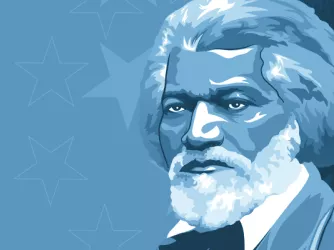
FIRE’s K-12 free speech curriculum modules help educators enrich and supplement their existing instruction on First Amendment and freedom of expression issues in K-12 classrooms.

FIRE’s First Amendment Curriculum draws on our 20 years of experience in actively defending free speech in academia, as well as our legal expertise and extensive scholar/educator network. These First Amendment resources for teachers are designed to foster appreciation and respect among students for freedom of speech, freedom of conscience, and the free exchange of diverse ideas.
Students will learn why their free speech rights are so valuable, how they are essential to learning and to democracy, and about their proven history in securing justice and fairness for disempowered and marginalized populations. Centered in social and emotional learning, these lessons demonstrate how basic rights can be threatened and illustrate ways to protect them. Likewise, students will discover why their own speech rights ultimately depend upon respecting others’ equivalent rights.
FIRE’s Free Speech Curriculum includes everything K-12 teachers need, from prepared PowerPoint slide decks to short, impactful videos. Based on existing learning standards, they include appropriate, engaging classroom activities along with meaningful assessments. Already in use by hundreds of educators across the country, FIRE’s Free Speech Curriculum provides a useful and necessary addition to every classroom concerned with cultivating active citizenship and rigorous, open discourse in the next generation.
Questions and comments about our First Amendment curriculum and educational resources may be directed by email to highschooloutreach@thefire.org.
Already in use by hundreds of educators across the country, FIRE’s Free Speech Curriculum provides a useful and necessary addition to every classroom concerned with cultivating active citizenship and rigorous, open discourse in the next generation.

Ben Franklin was an influential champion of free speech and freedom of the press during the founding and formation of the United States of America.

The right to protest guarantees us the ability to use our free speech to voice opposition to things we disagree with. In this unit, students will learn what constitutes a legally protected protest and examine some notable controversial forms of protest.

Centered on Frederick Douglass’ acclaimed defense of free expression, A plea for free speech in Boston, this lesson is ideally suited for use during Black History Month.

We prepared a special Constitution Day lesson to help educators communicate the background and value of their First Amendment Rights.

This character-building lesson, designed for Women’s History Month, offers students an empowering glimpse into the many achievements and profound emotional strength of one of America’s most admired First Ladies, Eleanor Roosevelt.

Drawing from the life and journey of NBA star Enes Kanter Freedom, this mini-lesson highlights the unique protections of the First Amendment in the United States in comparison with restrictions abroad.

Students will discover reasons why freedom of the press is important and why newspaper theft — an unfortunate incident that sometimes takes place on American college campuses — is wrong.

Free speech rights have proven essential in securing a fair hearing for marginalized groups and isolated, targeted individuals throughout U.S. history. This module examines the crucial role of free speech in the Abolitionist, Women’s Suffrage, and Civil Rights movements.

Would you speak up if you saw something completely ridiculous? Or would you keep your doubts to yourself? This lesson examines the importance of thinking for oneself, even if everyone else disagrees.

When it comes to free speech, there’s always plenty to discuss and learn. Students will learn about some of the most popular arguments against free speech and how to respond to them, as well as why it can be important to voice your opinion, even if it’s an unpopular one.

The first right listed in the First Amendment is the freedom of religion. Students will learn the legal limitations of freedom of religion, take a webtour of historic religious sites in Philadelphia, PA, and study significant Supreme Court cases that have influenced the legal landscape.

This unit reviews the unique inheritance of basic rights and freedoms bestowed on all American citizens by our founding documents, which draw from Enlightenment conceptions of liberty and individual human dignity.

The legal landscape for free speech was defined by the Supreme Court over the past century. Topics include the importance of tolerating critical dissent in a democracy, the value of clashing opinions, and the reasons for responding to offensive speech with more speech, not censorship.

This unit will address the social-emotional aspects of dealing with unwelcome but protected speech, and covers ways that students can build resilience, refutation, self-advocacy, and coping skills.
Learn more about how FIRE advocates for your rights.